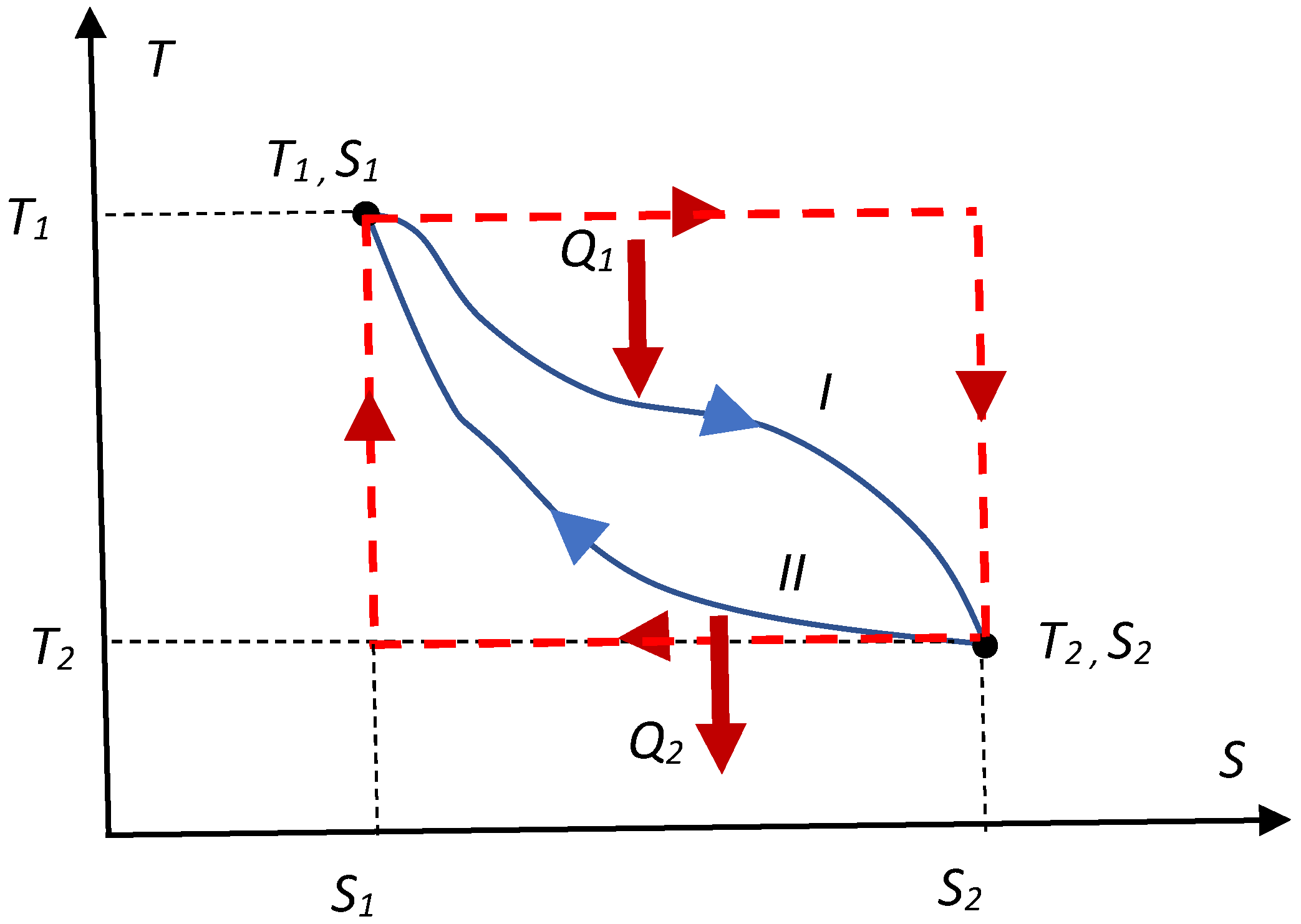Comments on “The Principle of Least Action for Reversible Thermodynamic Processes and Cycles”, Entropy 2018, 20, 542
Abstract
:Funding
Acknowledgments
Conflicts of Interest
References
- Zhao, T.; Hua, Y.-C.; Guo, Z.-Y. The Principle of Least Action for Reversible Thermodynamic Processes and Cycles. Entropy 2018, 20, 542. [Google Scholar] [CrossRef]
- Gelfand, I.M.; Fomin, S.V. Calculus of Variations; Dover Publications Inc.: New York, NY, USA, 2003. [Google Scholar]
- Elsgolc, L.D. Calculus of Variations; Dover Books on Mathematics: New York, NY, USA, 2007. [Google Scholar]
- Bormashenko, E. Young, Boruvka–Neumann, Wenzel and Cassie–Baxter equations as the transversality conditions for the variational problem of wetting. Colloids Surfaces A 2009, 345, 163–165. [Google Scholar] [CrossRef]
- Lucia, U. Carnot efficiency: Why? Phys. A 2013, 392, 3513–3517. [Google Scholar] [CrossRef]
- Gyarmati, I. Non-Equilibrium Thermodynamics, Field Theory and Variational Principles; Springer-Verlag: Berlin, German, 1970. [Google Scholar]
- Reis, A.H. Use and validity of principles of extremum of entropy production in the study of complex systems. Ann. Phys. 2014, 346, 22–27. [Google Scholar] [CrossRef]
- Martyushev, L.M.; Seleznev, V.D. Maximum entropy production principle in physics, chemistry and biology. Phys. Rep. 2006, 426, 1–45. [Google Scholar] [CrossRef]

© 2018 by the author. Licensee MDPI, Basel, Switzerland. This article is an open access article distributed under the terms and conditions of the Creative Commons Attribution (CC BY) license (http://creativecommons.org/licenses/by/4.0/).
Share and Cite
Bormashenko, E. Comments on “The Principle of Least Action for Reversible Thermodynamic Processes and Cycles”, Entropy 2018, 20, 542. Entropy 2018, 20, 980. https://doi.org/10.3390/e20120980
Bormashenko E. Comments on “The Principle of Least Action for Reversible Thermodynamic Processes and Cycles”, Entropy 2018, 20, 542. Entropy. 2018; 20(12):980. https://doi.org/10.3390/e20120980
Chicago/Turabian StyleBormashenko, Edward. 2018. "Comments on “The Principle of Least Action for Reversible Thermodynamic Processes and Cycles”, Entropy 2018, 20, 542" Entropy 20, no. 12: 980. https://doi.org/10.3390/e20120980
APA StyleBormashenko, E. (2018). Comments on “The Principle of Least Action for Reversible Thermodynamic Processes and Cycles”, Entropy 2018, 20, 542. Entropy, 20(12), 980. https://doi.org/10.3390/e20120980




